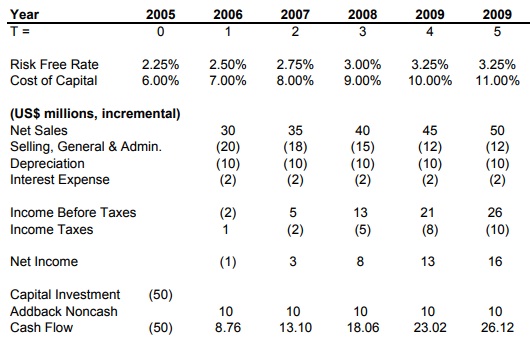Case Scenario:
Consumer Products Inc. (CPI) is a U.S. regional consumer products company located in Phoenix, Arizona. The company manufactures and distributes a small line of consumer products to retailers in major western cities including Los Angeles, San Francisco, Seattle, Portland, and Phoenix. The company has an excellent reputation as a good corporate citizen and producer of some of the highest quality products in the business.
CPI's three major brands are Shades of Youth, a hair care line that recently has been doing extremely well as the aging baby boomers look for products to help retain some of their youth; Super Clean, a line of detergent and bleach products; and Super White, a line of tooth paste that quickly and safely whitens teeth. Super Clean is the anchor division, and it was the sole line of products the company had when Javier Lopez founded it in 1951. The company launched Shades of Youth in 1975 and Super White in 1980.
You have headed up the Super Clean division for the last 8 years and were recently promoted to Chairperson of the Board and Chief Executive Officer (CEO). The firm went public ten years ago under the leadership of your predecessor as CEO, Regina Baker. CPI is well established on Wall Street and has a reputation of being a good company that is conservative and a safe investment.
With only a U.S. regional presence and $200 million in revenue, you are clearly aware that the company's ability to compete with the industry giants (Procter & Gamble, Unilever, Colgate, and Gillette) is limited. You believe that the firm must expand to other regions in the U.S. and begin international expansion if it is going to grow and prosper over the next decade.
The Board has reservations about making such bold moves, arguing that the company has been a successful regional company for over 50 years and can remain a niche player in the consumer products business. You see things differently. You see that the market is changing and competitors are becoming more aggressive by making acquisitions or developing new products that are extremely competitive with CPI's brands. More importantly, you believe that the company will either be crushed by competition or forced into a merger to survive.
You know the task ahead of you is daunting. As you approach the challenge of persuading the Board to expand, you believe it is critical that you outline the global macroeconomic issues that are driving the industry and articulate the microeconomic dynamics that are central to the firm's success. Ultimately, you see this as a decision-making problem. The Board must make the right decision now because the survival of the firm is at stake.
Task
Deliverable Length: 6-8 slides with notes
Details: The Board liked the analysis you did on valuation and agreed to proceed with the expansion plan. Your CFO, investment bankers, and consultants have all been working on the cost and benefits of various expansion options. They have agreed on an option that will see simultaneous expansion into 5 domestic markets (Chicago, Dallas, Miami, New York, and Charlotte), Germany, and Brazil. The CFO has developed cost and benefits of the scenario in a spreadsheet and has asked you to review it.
Look at the spreadsheet and use present value analysis to discount the cash flows. Determine if the project is a net positive or negative impact on the firm, NPV. Calculate the certainty equivalent cash flows and NPV. What kind of questions would you ask the CEO about economic assumptions? Articulate the economic and political risk with the strategy and list options to overcome. Should this approach to expansion be adopted? (Answer using CE cash flows and non-CE cash flows.
Please provide references.
